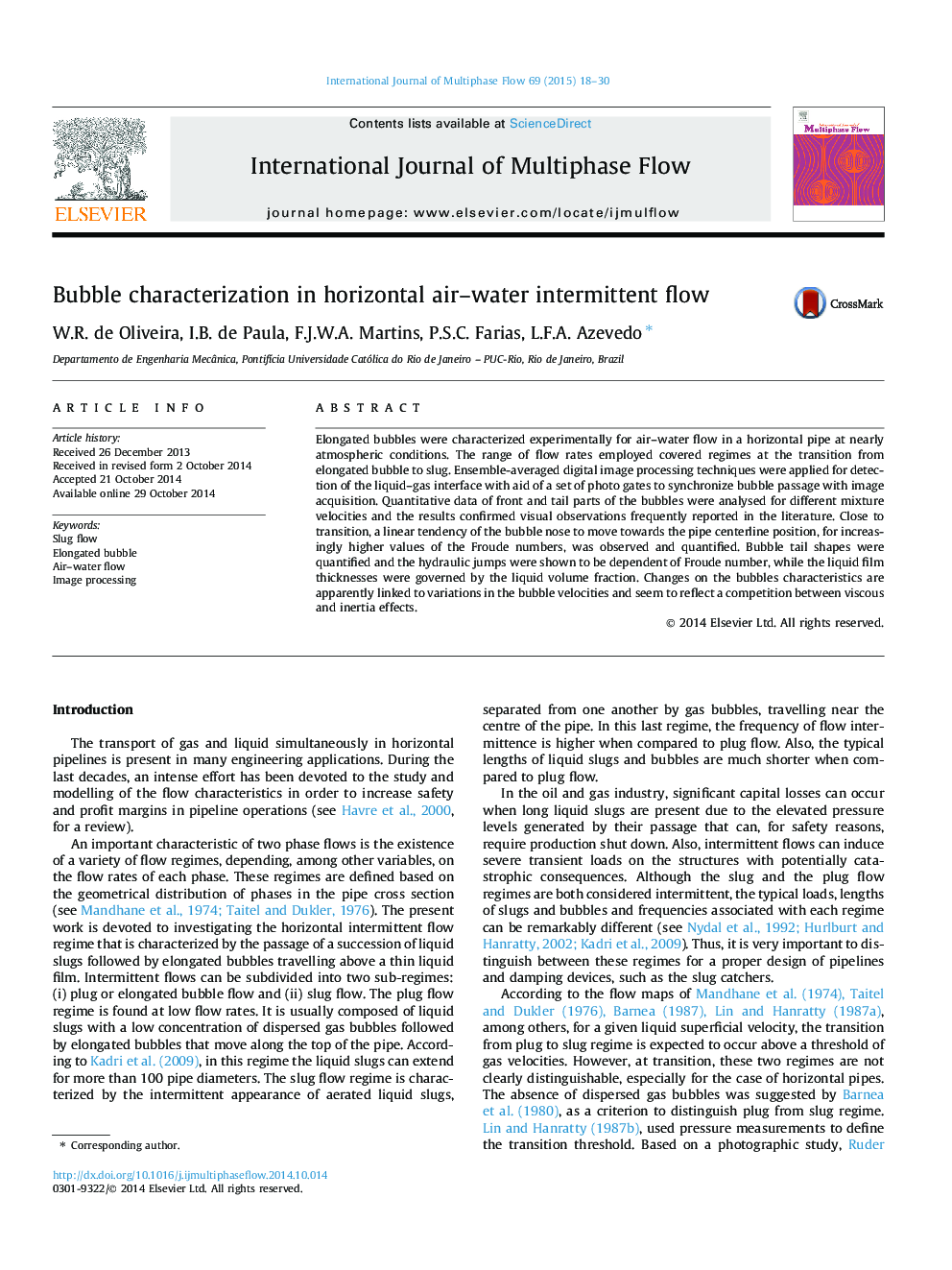| Article ID | Journal | Published Year | Pages | File Type |
|---|---|---|---|---|
| 667189 | International Journal of Multiphase Flow | 2015 | 13 Pages |
•We studied air/water flow in transition from elongated bubble to slug regimes.•Ensemble-averaged image techniques were developed to detect liquid–gas interfaces.•Measurements of bubble nose and tail revealed their dependence on mixture velocity.•Radial movement of bubble nose toward pipe centerline was measured.•Changes in shape of bubble nose and tail at transition were measured.
Elongated bubbles were characterized experimentally for air–water flow in a horizontal pipe at nearly atmospheric conditions. The range of flow rates employed covered regimes at the transition from elongated bubble to slug. Ensemble-averaged digital image processing techniques were applied for detection of the liquid–gas interface with aid of a set of photo gates to synchronize bubble passage with image acquisition. Quantitative data of front and tail parts of the bubbles were analysed for different mixture velocities and the results confirmed visual observations frequently reported in the literature. Close to transition, a linear tendency of the bubble nose to move towards the pipe centerline position, for increasingly higher values of the Froude numbers, was observed and quantified. Bubble tail shapes were quantified and the hydraulic jumps were shown to be dependent of Froude number, while the liquid film thicknesses were governed by the liquid volume fraction. Changes on the bubbles characteristics are apparently linked to variations in the bubble velocities and seem to reflect a competition between viscous and inertia effects.
